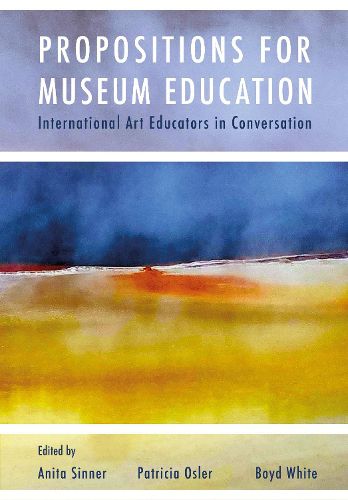Readings Newsletter
Become a Readings Member to make your shopping experience even easier.
Sign in or sign up for free!
You’re not far away from qualifying for FREE standard shipping within Australia
You’ve qualified for FREE standard shipping within Australia
The cart is loading…






A collection that showcases the new paradigm of museum education and marks moments of international change.
This book draws together international perspectives to facilitate deeper thinking, making, and doing practices central to museum engagement across global, local, and glocal contexts. Museums as cultural brokers facilitate public pedagogies, and the dispositions and practices offered in thirty-three chapters from nineteen countries articulate how and why museum collections enact responsibility in public exchange, leading cultural discourses of empowerment in new ways.
Organized into five sections, a wide range of topics and arts-based modes of inquiry imagine new possibilities concerning theory-practice, sustainability of educational partnerships and communities of practice with, in, and through artwork scholarship. Chapters diverse in issues, art forms, and museum orientations are well-situated within museum studies, enlarging discussions with trans-topographies (transdisciplinary, transnational, translocal, and more) as critical directions for art educators. Authors impart collective diversity through richly textured exposes, first-person accounts, essays, and visual essays that enfold cultural activism, sustainable practices, and experimental teaching and learning alongside transformative exhibitions, all while questioning: Who is a learner? What is a museum? Whose art is missing?
$9.00 standard shipping within Australia
FREE standard shipping within Australia for orders over $100.00
Express & International shipping calculated at checkout
A collection that showcases the new paradigm of museum education and marks moments of international change.
This book draws together international perspectives to facilitate deeper thinking, making, and doing practices central to museum engagement across global, local, and glocal contexts. Museums as cultural brokers facilitate public pedagogies, and the dispositions and practices offered in thirty-three chapters from nineteen countries articulate how and why museum collections enact responsibility in public exchange, leading cultural discourses of empowerment in new ways.
Organized into five sections, a wide range of topics and arts-based modes of inquiry imagine new possibilities concerning theory-practice, sustainability of educational partnerships and communities of practice with, in, and through artwork scholarship. Chapters diverse in issues, art forms, and museum orientations are well-situated within museum studies, enlarging discussions with trans-topographies (transdisciplinary, transnational, translocal, and more) as critical directions for art educators. Authors impart collective diversity through richly textured exposes, first-person accounts, essays, and visual essays that enfold cultural activism, sustainable practices, and experimental teaching and learning alongside transformative exhibitions, all while questioning: Who is a learner? What is a museum? Whose art is missing?